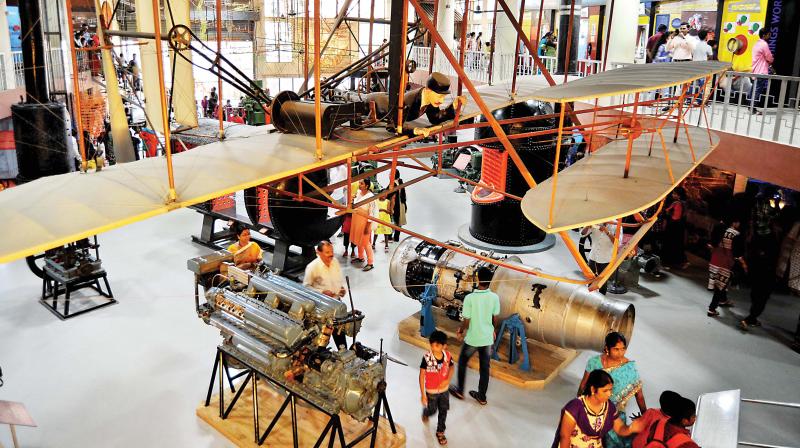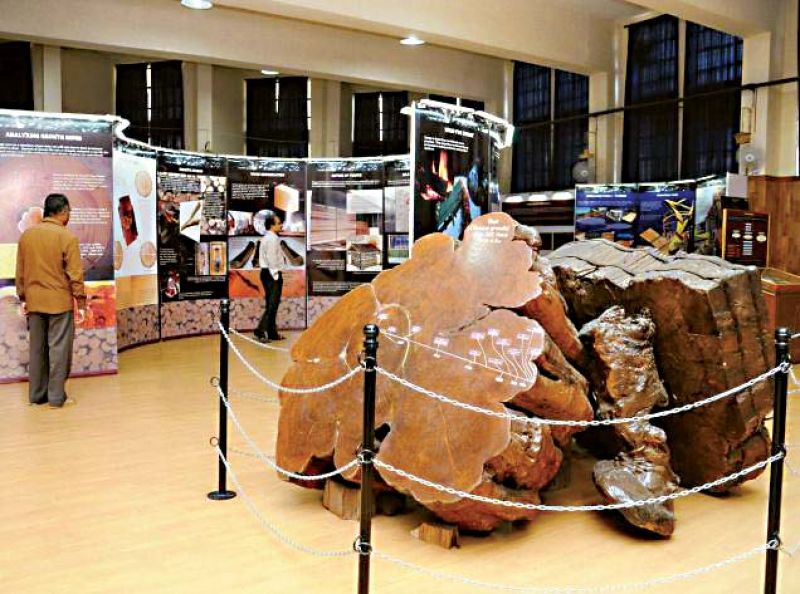Heritage dying in mouldy museums!

The city’s museums, which pay crumbling testament to a 3000-year-old heritage, are finally being given a leg-up by Tourism Minister Priyank Kharge. Hubs of culture and history across the world, they languish here in Bengaluru, due to apathy across political parties and the community, too. Paltry budget allocations, an absence of trained administrators, the lack of curators and community support need to be addressed before meaningful progress can be made, report Darshana Ramdev and Ranjani Madhavan
This is no trick question, but it will probably stump you. Ask someone how many museums the city is home to and they are bound to look puzzled. As it happens, the number is 13, according to a 2015 report by the Karnataka Tourism Vision Group.
The Karnataka Tourism Department, which has understood the potential of vibrant museum spaces, has launched Once Upon A time, which according to Minister Priyank Kharge, is a sustained effort toward "bringing about awareness on importance of their conservation." A commendable initiative, in light of the fact that most of our museums languish due to total apathy, the absence of trained administrators and curators and a lack of support from the community itself.
The Tourism Ministry, despite being behind the initiative, doesn't actually own any assets, with various museums being maintained by respective departments - Visvesvaraya Museum, for instance, belongs to the Department of Science and Technology. "If we want to improve our museums, the departments concerned need to embrace the idea and work together," said V. Ravichandar, urban evangelist and co-Chair, KTVG. It requires a mindset that is customer and citizen oriented, which he believes, is absent. "Curation is vital too, but the government simply doesn't have the manpower. They're reluctant to let outsiders take over too. It's an uphill struggle. Once Upon a Time is a good initiative, but how will they implement it?"
 National Gallery of Modern Art
National Gallery of Modern Art
The community isn't much help either, said Deepthi Sasidharan, Director, Eka Resources, a Delhi-based initiative that manages and organises cultural resources and collections. "People wince at paying Rs 10 to enter a museum but will happily fork out Rs 500 to watch a movie."
A Fulbright scholar who conducted her research on 19th century photographs at the Metropolitan Museum of Art, Sasidharan believes that museums can only exist with encouragement from the community. "I agree that the government lacks resources in many ways, but we aren't blameless either. It's easy to walk into a museum and complain about the displays or the service, but nobody wants to buy a ticket! People who want to start museums - and there are a handful in Bengaluru - don't get support either. We, as a community, need to understand that museums are a wonderful source of education, for us and our children. That's where the change starts."
Museums have a three-pronged approach, explains Tejasvi Jain, Founder, Rereeti, an organisation that works to revitalise museums. "There are many areas related to audience development that need work as well," she said. "The idea is to provide a curated, interactive experience."
 Woods Museum and Interpretation Centre
Woods Museum and Interpretation Centre
The bottom line, of course, is funding, or the lack thereof. "Museums can't afford to hire permanent staff or make meaningful changes to the setup," said Vikram Sampath, former head, Indira Gandhi National Centre for the Arts, who was part of a Knowledge Commission report on an art administration policy. "We did a survey on the health of various institutions and the budget allocations are shockingly low. Most of the staff is hired on a contractual basis, very few people have the expertise to run the place. A museum is not a one-time set up, it involves continuous upgradation. Museum administration is an actual course in many countries, where you're taught everything from acquisition to dissemination. That doesn't exist here."
And for those who still doubt their worth, Sampath points out: "We haven't had a new museum since Independence. Contrast this with the Louvre, in Paris, which receives more visitors in a year that India gets in all!"
Guided walks, workshops... lots to choose from!
It may be called 'Once Upon A time,' but this is no fairytale. Rather it is the title of a campaign that aims to take a serious look- back at the state’s roots, starting May 18, International Museum Day. The Tourism and Kannada and Culture Departments have come together to highlight the significance of the city’s museums in preserving its heritage in a three- day campaign ending on May 21.
Museum walks, talks, workshops, seminars, film shows, competitions and promotions will be held at the Visvesvaraya Industrial and Technological Museum, HAL Heritage Centre and Aerospace Museum, Karnataka Chitrakala Parishath, National Gallery of Modern Art, Government Museum, Gandhi Bhavan and the Human Brain Museum at NIMHANS
Making the campaign fun, a treasure hunt is in the offing for students of all ages, who will be offered clues about the specific exhibits they have to locate and the best explorer given a prize. There will also be an open house quiz on museums open to people of all age groups, reveals Mr. B.R Vishwanath, Education Officer of the Visvesvaraya Industrial and Technological Museum (VITM).
There is also the “Makers’ Fair” at the VITM, where visitors will be able to make use of material provided to build a science based model or exhibit of their choice with mentoring by experts. Adding to their delight, the models will be later put on display. Storytelling sessions will be held on the city’s history both in Kannada and English to create awareness about the various museums during the event. People will also get to tell their own stories from city museums by contributing their personal experiences on social media using the hashtag #MyMuseumStory.
Those looking for more serious things to do will be able to attend lectures and talks by experts at the various venues and also see a film screened on the National Council of Science Museums.
“People can take a walk with the curators of the museum, or accompany the expert at a gallery. The idea is to let them freely interact with the curator, learn about the process of curation and the basic idea of the exhibit,” explains Mr. Vishwanath.
The Kannada and Culture Department is an enthusiastic participant as it oversees the state archives, the gazetteer, and places of heritage value. " Our department is not restricted to Kannada language and culture. Museums are important in preserving our culture and its only natural that we should coordinate with the Tourism Department in promoting them," says Ms Kiran Singh, media officer of the department.
Preserving our 3,000-year heritage is neither easy nor cheap: Priyank Kharge, Tourism Minister
The idea of having this campaign is to encourage people, especially children to go to museums as the holidays are here. More often than not students end up at malls during their vacations. Why not push them to explore our museums instead? We want to bring about awareness among them about the importance of conservation. How many of us even know that there is a Brain Museum in Bengaluru?
We wanted to have an event that curated art, culture, history, science and innovation and have spent Rs 7 to Rs 8 lakh on it. But we need to spend more to preserve our heritage and culture. Let's get our feet wet in the water now and see that we come across as a city sensitive to its roots. This will not happen if it is just a one- time thing or a sole weekend activity. We need to have more programmes of this kind. This is the first time all the museums have allowed us to curate them, along with activities like film screenings and storytelling. Bringing history, art, science and culture together has to be done more often. Having a theme- based narrative like Mohenjodaro or the Wodeyars will engage people.
Today people are willing to pay even Rs 300 to watch a movie in a multiplex, but when a museum increases its ticket price from Rs 2 to Rs 5 they are not willing to spend on it. This mentality needs to change. To preserve our 3000- year old heritage, we need to spend money on its conservation and maintenance. Some may accuse me of being anti-people, but then they also complain about poor infrastructure, not realising the latter cannot be achieved without spending some money. Of course we cannot have exorbitant rates, but with a slight increase in its ticket price to Rs 50 or Rs 60 a museum can sustain itself. Subsidies can be given to school and college children visiting in groups, but why have cheap rates for others? Museums are the one place where we can see how the whole of humanity has evolved over thousands of years. If we do not protect our showcases of art, history, science and heritage, no one will be interested in visiting them.

